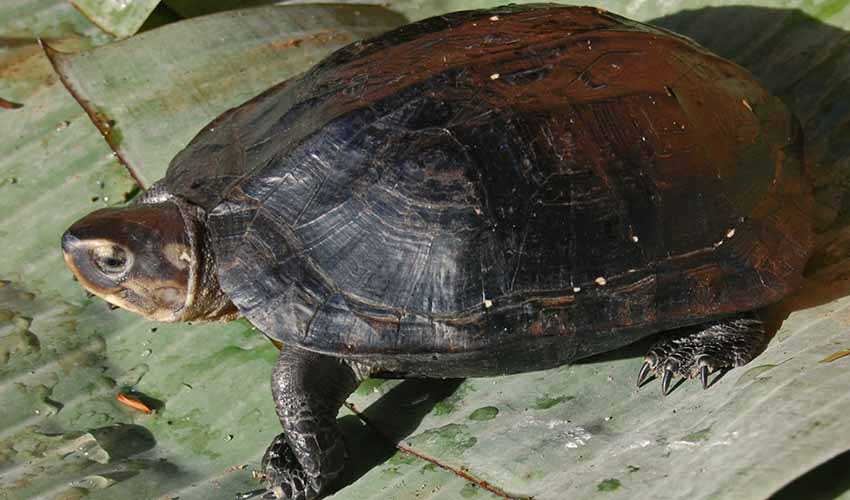Siebenrockiella
More likely to be quietly lurking in a shady corner of a swamp
A small but fascinating genus of turtles found in parts of Southeast Asia may not be as famous as sea turtles or tortoises, but it has some truly unique features that set it apart. They are adapted to life in wetlands, marshes, and slow-moving freshwater habitats. What makes these turtles stand out immediately is their appearance: they have dark, almost black shells and skin, giving them a shadowy, stealthy look. Unlike many brightly colored reptiles, Siebenrockiella is built for camouflage. Their shells are usually smooth and slightly domed, and they have a chunky, broad head with a serious expression that makes them look older than their years.
One of the key things that makes Siebenrockiella different from many other turtles is its semi-aquatic lifestyle. While lots of turtles either live mostly in water or mostly on land, these turtles do both. They are often found lounging in shallow water or muddy areas, but will come onto land to bask or nest. Their strong limbs and webbed feet allow them to move easily through both water and soft ground, making them well-suited to life in marshes and rice fields. Unlike snapping turtles, they aren’t aggressive by nature, but they can release a strong musky odor when threatened—an unexpected but effective defense mechanism. They’re also mostly active during the evening and night, which helps them avoid predators and the heat of the day.
Another cool feature of Siebenrockiella turtles is their diet and behavior. In the wild, they munch on insects, small fish, aquatic plants, fruits, and even carrion if they find it. This varied diet gives them a survival edge in changing environments, especially in areas where food might be seasonal or unpredictable. They’re also known for being shy and secretive, often hiding under logs, mud, or aquatic vegetation.
Species in this genus
Black marsh turtle
Its “smiling” appearance isn’t just endearing—it’s a natural shape of its jawline and mouth corners that gives it a perpetual friendly look
Philippine forest turtle
One of the most range-restricted turtles on Earth



